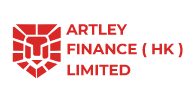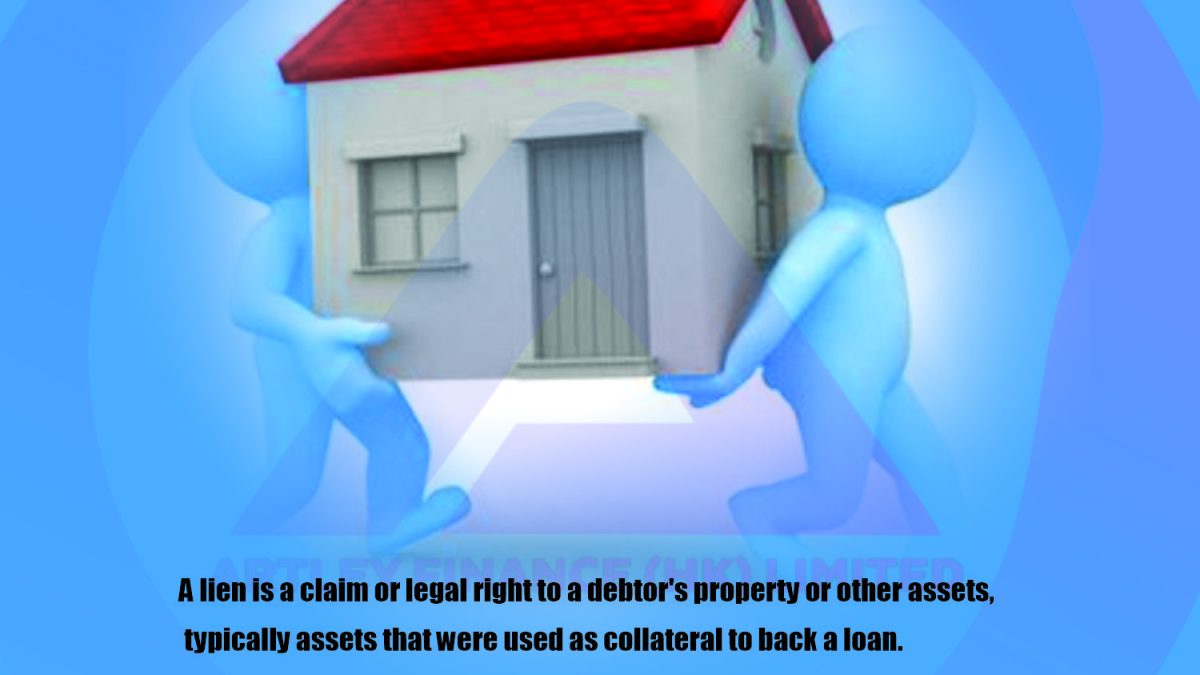Understanding Liens: Types, Uses, and Key Insights to Protect Your Assets

5 Key Insights into Bank Financial Instruments by Artley Finance (HK) Limited
December 7, 2024
BG SBLC Monetization
December 12, 2024Understanding Liens: Types, Uses, and Key Insights to Protect Your Assets
Understanding Liens
Understanding liens is crucial as liens can spell trouble, especially if you find yourself on the receiving end of one. In essence, a lien is a legal claim placed on an individual’s or business’s property, often used as a tool to ensure debt repayment or enforce a judgment. Whether due to unpaid debts, unresolved legal judgments or as a means to secure future payment, a lien can restrict the property owner’s ability to sell or transfer their asset.
Courts typically issue liens when a debtor either cannot or refuses to settle a financial obligation. If you’ve received a lien notice, or are considering agreeing to a lien on your property, consulting with a financial advisor can provide guidance on how best to handle your options and protect your financial interests.
WHAT IS A LIEN
A lien is a claim or legal right to a debtor’s property or other assets, typically assets that were used as collateral to back a loan. It serves to guarantee that the underlying obligation will be satisfied. If not, the creditor can seize and sell the assets in question.
Liens can also be established through court judgments and by government entities for reasons such as unpaid taxes. This article describes the major types of liens and how they work.
HOW ARE LIENS USED?
Many contracts include liens, which allow lenders to claim property if payments aren’t made. For instance, home and auto loans often have liens on the property itself, so if you don’t keep up with payments, the lender can take ownership. Similarly, mechanics, contractors, and attorneys often include liens in their agreements to ensure they’ll get paid. When someone uses personal property to “secure” a loan, it means the loan agreement includes a lien on that property. This gives the lender assurance that, even if the borrower defaults, they still have a way to recover their money.
Liens can be voluntary, or consensual, such as a lien on a property for a loan that the borrower has agreed to. However, involuntary or statutory liens can also be created when a creditor seeks legal action for nonpayment of a debt. For example, a court can place a lien on the debtor’s assets, including property and bank accounts.
Courts also use liens to enforce their judgments. Once a court has ruled against someone, it creates a formal debt with a wide variety of enforcement mechanisms in cases of nonpayment. Seizure and garnishment are both common, as are government-issued liens. If you lose a lawsuit and fail to pay, the government may well issue a lien against your property.

Understanding liens | Artley Finance (HK) Limited
LEINS ARE CLASSIFIED INTO TWO:
- CONSENSUAL
Consensual liens are created by contractual obligations between the concerned parties. The most common examples are loans obtained to purchase real estate or personal property (chattel). They can be mortgages or auto loans.
2. NON-CONSENSUAL
Non-consensual liens arise from statutory or common law. The most notable example is a tax lien, which is imposed by law against the property of a taxpayer. If a taxpayer fails to pay the taxes owed to the government, the tax agency can seize his or her real or personal property for the amount of the lien.
TYPES OF LIENS:
There are a variety of types of liens and lien holders. Liens can be put in place by financial institutions, businesses, courts, and governments. These are some of the most common ones:
JUDGMENT LIEN:
A judgment lien is a lien placed on a debtor’s assets by a court, usually as a result of a lawsuit. It can remain in place until the debt has been satisfied.
BANK LIEN:
A lien is often created when someone uses a bank loan to buy something valuable, like a car. In this case, the bank pays the car dealer on behalf of the buyer, and in return, the bank holds a lien on the car. This means if the borrower fails to repay the loan, the bank can take the car and sell it to recover the money. If the borrower does repay the loan in full, the bank will release the lien, and the individual owns the car free and clear.
TAX LIEN:
Statutory liens are liens created by law instead of a specific contract. These are common in areas like taxation, where tax authorities can place liens on the property of people who haven’t paid their taxes. For instance, many local governments use liens to collect unpaid property taxes.
MECHANIC’S LIEN:
If an owner doesn’t pay for services they’ve received, a mechanic’s lien can be placed on their property or other assets. This lien gives the service provider the right to seek a court judgment to have the assets sold at auction to cover the unpaid amount. Many types of service providers, such as construction companies and even dry cleaners, can use liens as a way to secure payment.
REAL ESTATE LIEN:
A real estate lien is a legal right to seize and sell a particular piece of property if a contract is not fulfilled. Some real estate liens are put in place automatically, such as when a borrower takes out a mortgage to buy a home. The lender then releases the lien when the mortgage is paid off.
However, real estate liens can also be involuntary, or nonconsensual, if a court decides to impose one to help satisfy a debt.
LIENS AS LEGAL
Liens are a legal mechanism for enforcing a loan. This means that they do not give the creditor any automatic rights over your property even if you miss a payment, default on a loan or otherwise trigger this clause.
It’s a common misconception that creditors can simply enforce a lien automatically, but that’s not the case. Before a creditor can act on a lien, they first need to go to court and secure a judgment. This means that banks, lenders, or any creditor must demonstrate to the court that the contract terms have been met and that enforcement is warranted. Only then will the court issue a judgment to enforce the lien. At that point, the lien changes from a claim on your property to actual partial ownership of the asset, giving the creditor real rights to it.
Liens often seem privately enforced because they are handled so routinely. Although everyone has the right to a hearing, many courts, in practice, automatically approve collection petitions. This issue became especially severe during the 2008–2009 mortgage crisis, when banks filed hundreds of petitions daily to foreclose on homes. Most courts approved these petitions without thorough review, resulting in thousands of unlawful foreclosures.Sometimes banks and lenders illegally enforce liens without seeking a judicial write. Many will seize assets on their own when someone fails to pay a debt. This is far more than a technicality. Besides illegal repossessions, some lenders keep all of the proceeds of a sale regardless of how much money the debtor actually owes.
RIGHTS AND RESPONSIBILITIES:
It’s important to understand that, like most laws regarding personal property, liens are very specific to state and local laws. Be sure to research your specific rights and responsibilities based on where you live. In general, however, the only way to remove a lien on your property is to pay off your debts in full.
With few exceptions, as long as you make payments against the underlying debt, a lien does not affect your ownership or possession of the property. The lien only affects your ownership if you miss payments and the creditor secures a judgment. At that point, you then only partially own the asset, subject to the amount in question.
WHAT IS A FLOATING LIEN?
More common in business rather than consumer lending, a floating lien refers to a lien on inventory or other unfixed property.
WHAT IS A SECOND LIEN?
A second lien is lien secured by the same asset as a first or original lien, such as a lien with a home equity loan for a home that still has a first mortgage. Second liens are lower in priority than first liens, meaning that the holder of the first lien has a right to be paid back before the second lien holder is. Second liens are sometimes referred to as junior liens, with first liens being senior to them.
TIPS FOR HANDLING DEBT:
- Liens can be a hassle, but like most issues, they’re best handled by planning ahead to avoid them. Finding a financial advisor doesn’t have to be difficult. Smart Asset’s matching tool connects you with up to three qualified financial advisors in your area, and you can schedule a free introductory call to find the right fit. If you’re ready to work with an advisor to reach your financial goals, you can get started today.
- Don’t fear debt; understand it. In our article on the subject, we explain what you need to know about debt, credit and making sure that the bill collectors never have a chance to come after your assets.
Artley Finance (HK) Limited is a Hong Kong (HK) based Business Loan Lender, Trade Finance Specialist, BGSBLC Provider & Bank Instrument Issuer / monetizer with decades of experience. We are established on the pillars of trust that our customers show in us, which has enabled us to successfully conclude more than 98,000 deals globally. At Artley Finance (HK) Limited, our mission is to empower every business to succeed by providing the best financing options.
If you are seeking to raise capital or require more information about our financing options, we are available to provide detailed assistance. At Artley Finance HK Limited, our focus is on the effective issuance, leasing, funding, and monetization of bank instruments such as SBLCs and BGs.
OUR SERVICES:
- Loans: Non-Recourse Loans, Business Loans, Secured Loans, Unsecured Loans, International Project Financing
- Bank Instruments: Bank Guarantees (BG), Standby Letters of Credit (SBLC)
- Letters of Credit: Demand Letters of Credit (DLC), Usance Letters of Credit
- Investments and Wealth Management
- Insurance Underwriting Services
- Private Placement Programs (PPP) and Trading Platforms
- Corporate Finance / Trade Finance
BROKER INQUIRIES
We welcome broker inquiries and offer a 2% commission for successful referrals. We support brokers and clients in securing innovative financing solutions.
To explore how a leased Standby Letter of Credit (MT760) from Barclays Bank, HSBC, Chase Bank, Standard Chartered Bank, or any other top-rated bank can assist in finalizing significant deals with suppliers and contractors, please contact us.
For further details on how to apply for an SBLC, please visit our application page. If you found this information useful, we invite you to read more articles on our blog.



